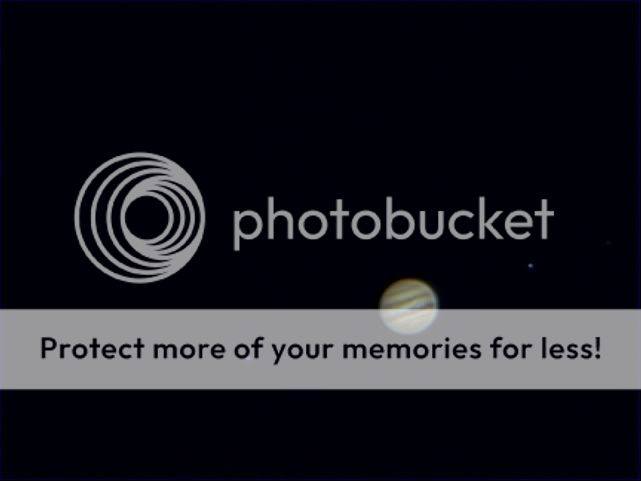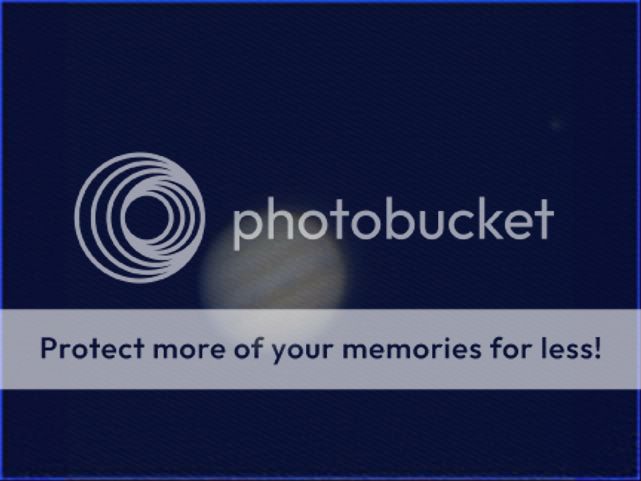jgs001
Brian Cox
- Messages
- 12,646
- Name
- John
- Edit My Images
- Yes
Had a short play last night with my Skymax 102 and SPC900 webcam... hmm... focal length of 1300mm, crop factor of 8.5x.. equiv focal length 11,050mm 
The atmosphere was too turbulent last night to double the real focal length, the resulting AVI was just mush... so the image scale is a little teeny...
Anyway... 570 or 1204 frames, stacked in Registax, wavelets and a high pass sharpen in GIMP, a little dodge/burn (not sure which as this always muddles me...) to bring out the moons (the little dots either side).

I'm very pleased with the result though... Hope you like it. No C&C needed, I know it could be better, I find this much harder than Deep Sky imaging..
The atmosphere was too turbulent last night to double the real focal length, the resulting AVI was just mush... so the image scale is a little teeny...
Anyway... 570 or 1204 frames, stacked in Registax, wavelets and a high pass sharpen in GIMP, a little dodge/burn (not sure which as this always muddles me...) to bring out the moons (the little dots either side).

I'm very pleased with the result though... Hope you like it. No C&C needed, I know it could be better, I find this much harder than Deep Sky imaging..
Last edited:




